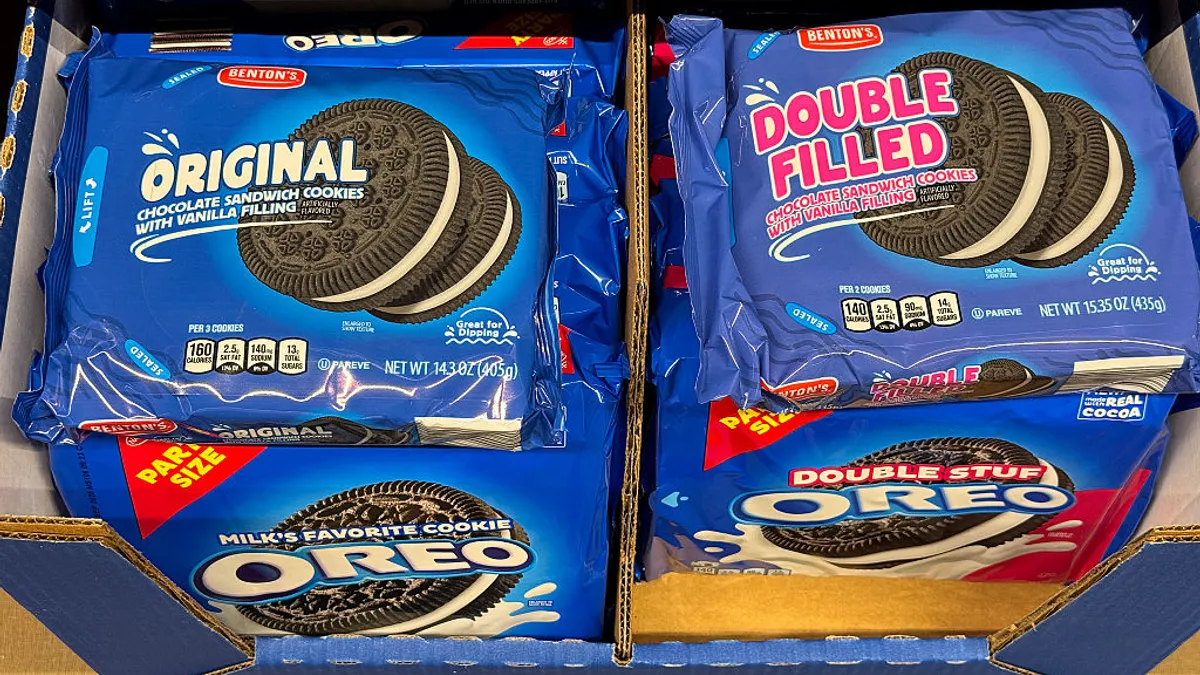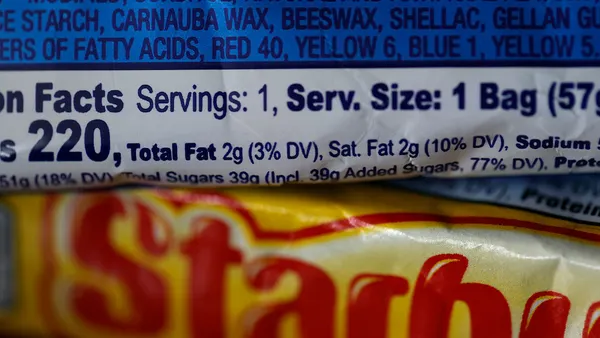Dive Brief:
- Changing how the Food and Drug Administration regulates food labeling claims would go a long way toward cutting down on consumer confusion and may even reduce diet-related diseases, according to a paper published Feb. 21 in the American Journal of Preventive Medicine.
- "Harnessing the Power of Food Labels for Public Health" was co-authored by Peter Lurie, president and executive director of the Center for Science in the Public Interest, and Jennifer Pomeranz, a professor in the College of Global Public Health at New York University. They maintain that as the FDA revamps a number of food labeling rules, it should also move to limit concerning marketing trends, ingredient statements and naming practices.
- The four-page paper includes a chart identifying several health-related claims currently appearing on foods and suggesting ways the agency might make them stronger. The co-authors conclude that since the FDA has taken a public health approach to other products within its scope of authority, it should make sure "food labels are truthful, not misleading, and provide true clarity for consumers seeking a healthy diet."
Dive Insight:
Food labeling has increasingly become a complicated and heated debate in recent years. CSPI is the latest to weigh in and argue the FDA should do more to let consumers know important details about their foods and beverages.
The paper's authors suggest the agency clamp down on marketing claims now permitted on certain products, such as sugary cereals and processed pastries, which state they’re "good" or "excellent" sources of vitamins and minerals. Additionally, products like cereals, candy and salty snacks commonly advertise having whole grains, fruits or vegetables despite containing only tiny amounts of those healthful ingredients, the co-authors wrote.
The paper discusses how the FDA regulates four specific food labeling claims: health claims, qualified health claims, nutrient content claims and structure function claims. Each requires differing levels of government regulation and scientific standards. The paper argues that each could use some tweaking to be more effective for consumers.
For example, nutrient content claims "expressly or implicitly characterize the level of a nutrient of the type required to be disclosed in nutrition labeling." The problem with current practice, the co-authors state, is that there's no disqualifying level of other ingredients that might be present, meaning an unhealthy food with high levels of sugar or sodium can still advertise healthy levels of vitamins on its product packaging.
While making the labeling changes the paper suggests might provide consumers with more helpful guidance as they look for healthier products in the grocery store or online, they’re not likely to appeal to manufacturers of sugary cereals or salty snacks. Prohibiting vitamin and mineral content statements on highly processed foods or requiring higher levels of healthful ingredients could cost big CPG manufacturers money and potentially limit sales. On the flip side, products meeting higher health standards by adding more whole grains might benefit from increased business.
This isn't the only recent call for the FDA to make food labeling changes. Last year, the American Medical Association asked the agency to adopt front-of-package warning labels for items containing high levels of added sugars. The group also asked the FDA to limit how much added sugar could be permitted in foods making health or nutrition claims on the package.
But the Sugar Association said such warning labels would only mislead consumers because they aren't grounded in science. Also, the FDA hasn't set any limits on how much sugar is too much, making such changes harder to accomplish without a major policy shift. The agency undoubtedly would attract opposition from food industry lobbyists should it contemplate tightening up labeling claims, so it would take significant time and political will to strike out in a new regulatory direction.
Before joining CSPI in 2017, Lurie spent eight years at FDA, including serving as associate commissioner for public health strategy and analysis. That experience presumably gives him an insider's view on how the agency operates and some more pragmatic options about how it might adjust policy. It will be interesting to see how the FDA responds to this new paper, and if it decides to change any food labeling requirements as a result.











